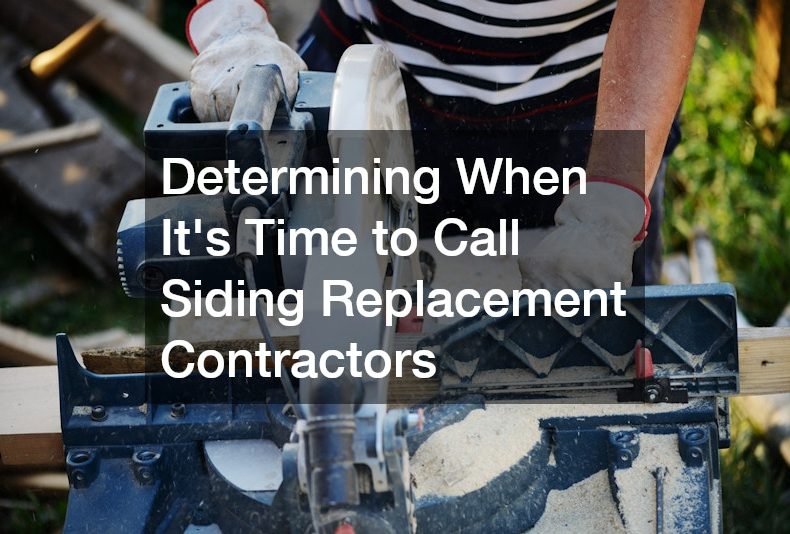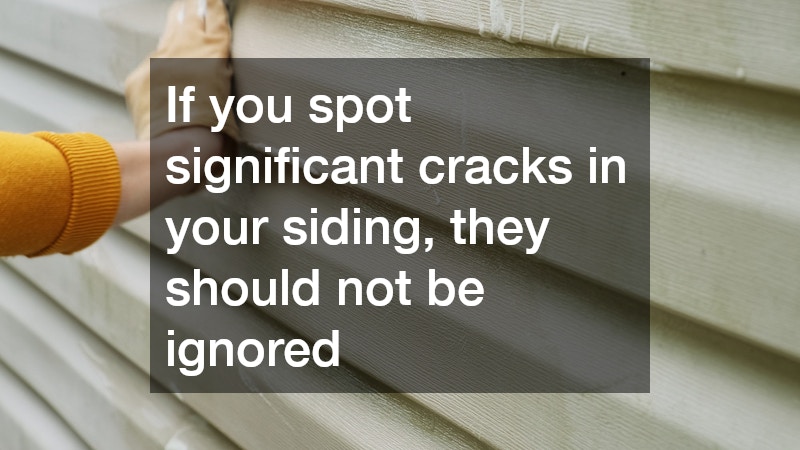
Determining When It’s Time to Call Siding Replacement Contractors
It can be helpful to understand the signs that indicate it might be time to call siding replacement contractors, and in doing so, homeowners can make informed decisions about their property maintenance. Your home’s siding serves as its first line of defense against the elements, protecting it from moisture, pests, and weather-related damage. Over time, however, siding can begin to show signs of wear that compromise both its appearance and effectiveness.
Knowing when to call a siding contractor for replacement is essential to maintaining your home’s structural integrity and curb appeal. By recognizing the warning signs—such as cracks, warping, or rising energy bills—you can take timely action to prevent more costly repairs down the road. Understanding when professional intervention is needed helps ensure your home stays protected, efficient, and beautiful for years to come.
Signs that Indicate a Need for Replacement
One of the most prevalent signs of siding needing replacement is warping. Warping occurs when the siding material begins to bend or twist under environmental stressors, often due to moisture infiltration or temperature extremes. Observing warped siding can indicate underlying issues that may require immediate attention.
Another common indicator is cracking. Cracks can develop due to age, exposure to severe weather, or even improper installation. If you spot significant cracks in your siding, they should not be ignored, as they can compromise the integrity of your home’s exterior and lead to further damage over time.
Discoloration is also a key sign that your siding may need to be replaced. This commonly results from prolonged UV exposure, mildew growth, or other environmental factors that can fade the color of your siding. Faded or discolored siding not only detracts from your home’s curb appeal but can also signal that the material is reaching the end of its lifespan.
Assessments of Siding Age and Condition
To assess the age of your siding, start by locating any paperwork or documentation from the time of installation. Many homeowners retain records such as permits or material warranties that can provide insight into when the siding was installed. If documentation is unavailable, a rough estimate may be made by examining the type of material and its typical lifespan.
Once you have an understanding of the age, a physical inspection can help determine the overall condition of your siding. Look for visible signs of wear and tear, including loose panels, gaps between the siding boards, and rust or mold buildup. Performing a thorough check of these elements will help gauge your siding’s current status.
Additionally, consider enlisting a professional to conduct a detailed inspection. Experts have keen eyes for recognizing subtle signs of deterioration that may not be immediately noticeable to the average homeowner. This step is crucial for understanding whether a simple repair can extend the life of your siding or if full replacement is necessary.
Benefits of Hiring a Professional
One of the primary benefits of hiring professional siding replacement contractors is their expertise. These professionals possess the skills and knowledge to accurately assess your siding situation and recommend the best course of action. Their experience allows them to navigate potential pitfalls that might arise during the replacement process, ensuring a smoother project overall.
Moreover, many professionals offer warranties on their work, providing you with peace of mind. This means that if anything goes awry with the installation or the materials used, you have some recourse. Homeowners benefit from the assurance that comes with working with established contractors who stand by their services.
Quality assurance is another compelling reason to hire professionals. They have access to high-quality materials and the latest techniques in siding installation. This can lead to a more durable exterior that withstands the elements and maintains its appearance over time. Ultimately, investing in professional services could save you money in the long run by avoiding premature replacement or additional repairs.
Factors to Consider When Choosing Material
When choosing a siding material, durability should be at the forefront of your decision-making process. Different materials offer varying levels of resilience to weather, pests, and general wear over time. It is critical to evaluate how well each material performs in your specific climate to ensure longevity.
Aesthetics also play a significant role in selecting siding. You will want a style that complements your home and blends with the neighborhood. Various siding materials, such as wood, vinyl, and fiber cement, offer diverse looks and finishes to choose from, allowing you to personalize the exterior of your home.
Maintenance requirements are another crucial factor. Some siding materials require more upkeep than others, impacting your overall home maintenance schedule and budget. For instance, while wood siding offers beautiful aesthetics, it requires frequent painting and treatment to maintain its integrity, whereas vinyl siding often requires minimal upkeep.
Deciding to replace your siding can greatly enhance the value and appearance of your home. By recognizing the signs and understanding the process, homeowners can confidently approach siding replacement contractors to ensure their home is well-protected.

You may also like
Calendar
| M | T | W | T | F | S | S |
|---|---|---|---|---|---|---|
| 1 | 2 | |||||
| 3 | 4 | 5 | 6 | 7 | 8 | 9 |
| 10 | 11 | 12 | 13 | 14 | 15 | 16 |
| 17 | 18 | 19 | 20 | 21 | 22 | 23 |
| 24 | 25 | 26 | 27 | 28 | 29 | 30 |
Leave a Reply